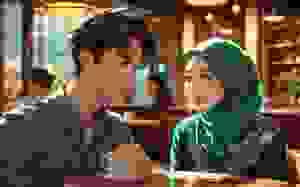Harvard Portraiture Project Elevating Overlooked Voices
The Harvard Portraiture Project is an innovative initiative that seeks to elevate the voices of often-overlooked individuals, shining a light on their contributions to social justice and cultural representation. Spearheaded by artist Robert Shetterly and the late Professor S. Allen Counter, this project showcases the courage of figures who have significantly impacted society, particularly focusing on female changemakers. Through compelling portraits, Shetterly’s art exhibit transcends mere visual representation, weaving narratives that inspire hope and provoke thought. Each depicted figure embodies a unique courage, challenging viewers to engage with their stories and the broader context of change. This remarkable endeavor not only enriches Harvard’s campus but also serves as a vital reminder of the progressive movements within our communities.
The Harvard Foundation Portraiture Project represents a transformative approach to honoring those who have made meaningful strides toward empowerment and change. Driven by a commitment to social equity, this artistic venture highlights the importance of visibility and recognition for diverse voices. With a particular focus on influential women, the initiative melds art with activism, challenging traditional narratives and showcasing the stories of underrepresented figures. These vibrant depictions not only invite reflection but also foster discussions about cultural inclusion and the ongoing fight for justice. By celebrating these changemakers, we also inspire future generations to recognize the power of perseverance and advocacy.
The Legacy of the Harvard Foundation Portraiture Project
The Harvard Foundation Portraiture Project stands as a pivotal initiative aimed at enhancing cultural representation within the realm of higher education. It seeks to highlight the achievements and experiences of individuals who have often been overlooked by history, creating a more inclusive narrative that resonates with audiences across the globe. This project aligns seamlessly with Robert Shetterly’s vision through his ‘Americans Who Tell the Truth’ series, where the portraits serve as a visual dialogue that elevates the voices of female changemakers and social justice advocates.
In recent exhibitions, the Portraiture Project has significantly emphasized the stories of female figures who have made substantial contributions to society. By showcasing portraits of women such as Paula Murray and Regina Jackson, the project not only celebrates their achievements but also invites viewers to engage deeply with their narratives. This focus on female changemakers reflects a broader commitment to addressing historical gender inequities and fostering a culture of inclusivity within the arts.
Robert Shetterly: Portraits and Their Impact
Robert Shetterly has dedicated much of his artistic career to portraying individuals who embody courage and advocacy for social justice. Through his intimate portraits, Shetterly captures not only the likeness of his subjects but also their essence, often inscribing quotes that resonate with their lived experiences. His works encourage audiences to take a moment of reflection, moving beyond quick glances and urging them to ponder the deeper meanings behind the art. By marrying visual representation with poignant words, Shetterly cultivates a dialogue about personal courage in the face of societal challenges.
Shetterly’s portraits are more than mere paintings; they represent a legacy of activism and hope. Each piece serves as a visual testament to the struggles and triumphs of those depicted, emphasizing the necessity of storytelling in the fight for social justice. His collaboration with the Harvard Foundation Portraiture Project amplifies this message, allowing for a broader examination of how art can inspire change and celebrate the stories of marginalized communities.
Celebrating Female Changemakers in Art
The recent exhibition, ‘Seeing Each Other,’ focused on female changemakers, highlighting the critical role of women in the fight for social justice and equality. Featuring portraits of notable figures such as Eileen Southern and Rosa Rios, the event aimed to inspire future generations by showcasing powerful representations of women who have paved the way for change. This portrayal not only celebrates their contributions but also reminds us of the ongoing efforts needed to achieve gender equity in all spheres of life.
By bringing these female figures to the forefront, the exhibit challenges the historical narrative that has often sidelined women’s stories. The artists involved, including both Shetterly and Stephen Coit, effectively utilize their medium to deliver messages that resonate with contemporary social issues. Their work serves as an important reminder of the significance of cultural representation in the arts, advocating for a balanced narrative that reflects the diverse experiences of all individuals.
The Role of Arts in Social Justice Advocacy
Art plays a vital role in social justice advocacy by providing a platform for marginalized voices to be heard. Through exhibitions like the Harvard Foundation Portraiture Project, artists are given the opportunity to showcase narratives that challenge existing social norms and inspire action. The emotional power of visual storytelling can foster empathy and understanding among viewers, thereby catalyzing dialogue around pressing social issues. The portraits serve as a reminder that every individual has a story worthy of recognition, fostering a community spirit that champions diversity and inclusion.
Moreover, artistic expressions of social justice often transcend traditional boundaries, allowing for a collective movement that rallies around change. Events highlighting figures who have made significant impacts in their communities beckon audiences to reflect on the role they can play in their own spheres of influence. The arts become not only a means of individual expression but also a collective call to action, fostering a culture of solidarity and advocacy against injustice.
Influence of Historical Figures on Contemporary Art
Historical figures, particularly those connected to the struggle for social justice, have profoundly influenced contemporary artists like Robert Shetterly. By studying the lives and legacies of individuals such as W.E.B. Du Bois and Pauli Murray, artists are inspired to create works that resonate with the values of equality and representation. This fusion of history with modern artistry allows for a rich exploration of themes that remain relevant today, underscoring the cyclical nature of activism across generations.
Shetterly’s works, reflecting on the principles these historical figures stood for, challenge viewers to reconsider their understanding of progress and representation. By honoring those who blazed the trail for future activism, contemporary art becomes a vital conduit through which societal reflections can exist, pushing the boundaries of dialogue around race, gender, and justice. In such ways, historical figures not only inform but actively shape the contemporary art landscape.
Engaging Audiences Through Interactive Exhibitions
Interactive exhibitions have gained traction as a powerful tool to engage audiences with art, making the experience more immersive and impactful. The inclusion of quotes and personal narratives within the artwork invites viewers to engage more deeply with the subjects portrayed. Robert Shetterly’s method of incorporating meaningful text into his portraits encourages attendees to reflect on the ideas behind the visual representations, creating a richer context for understanding the messages of social justice and change.
By fostering an engaging atmosphere where audiences can connect with the themes of the exhibitions, organizers encourage a thoughtful dialogue that extends beyond the gallery walls. This approach helps to cultivate a community of individuals who are informed and inspired by the stories of those depicted, urging them to take proactive steps toward advocacy in their own lives. The fusion of art and audience interaction ultimately enhances the overall impact of exhibitions focused on social justice and cultural representation.
The Importance of Storytelling in Portraiture
Storytelling plays a fundamental role in portraiture, particularly in works aimed at promoting social justice. Every portrait tells a unique story that transcends mere appearance, allowing viewers to delve into the lives of the individuals depicted. The inclusion of personal narratives alongside visual art helps humanize historical figures, making their struggles and triumphs feel accessible and relatable. This storytelling aspect is especially significant in projects like the Harvard Foundation Portraiture Project, where the intent is to amplify voices that have long gone unheard.
Portraits are, in essence, windows into the lives and experiences of individuals, capturing moments of courage and resilience. By combining visual artistry with compelling narratives, artists like Shetterly invite audiences to immerse themselves in the deeper meanings of their works. This convergence of art and storytelling not only enhances the aesthetic experience but also effectively communicates powerful messages about advocacy, representation, and the ongoing fight for social justice.
The Impact of Visual Arts on Cultural Representation
Visual arts play a crucial role in shaping cultural representation, influencing how societies perceive and relate to different communities. Projects like the Harvard Foundation Portraiture Project highlight the pressing need for diverse representations in art, emphasizing the importance of including voices from all backgrounds. By prioritizing such narratives, the project seeks to dismantle stereotypes and foster a more accurate and nuanced understanding of history and culture.
Furthermore, the impact of visual arts extends to fostering a sense of identity and belonging among marginalized communities. When individuals see themselves represented in art forms, it instills a sense of pride and recognition that is vital for cultural empowerment. This exploration of identity in the arts can spark important conversations about social justice and equity, ultimately promoting a more inclusive society. The positive influence of visual arts on cultural representation underscores their importance in any comprehensive approach to advocacy and education.
Creating Dialogues Through Artistic Collaborations
Artistic collaborations often yield dynamic results that enrich the narrative surrounding social justice and cultural representation. When artists and curators work together, they bring unique perspectives to the forefront, creating multifaceted dialogues that resonate with diverse audiences. Through collaborative projects like those seen in the Harvard Foundation Portraiture Project, the community can experience an array of artistic interpretations that explore significant themes of courage, resilience, and advocacy.
These collaborations not only enhance the visibility of diverse voices but also open up discussions around equity and representation in the arts. By involving various stakeholders in the creative process, such projects can generate a deeper understanding of the historical and contemporary issues faced by underrepresented communities. The result is a rich tapestry of artistic expression that speaks to the heart of social justice advocacy and cultural representation.
Frequently Asked Questions
What is the Harvard Portraiture Project and how does it relate to social justice?
The Harvard Portraiture Project, initiated by Robert Shetterly and others, aims to highlight the voices of individuals who have courageously fought for social justice. By creating portraits of notable figures, the project not only celebrates their contributions but also facilitates critical conversations around cultural representation and the importance of diverse narratives in our society.
How does Robert Shetterly’s art exhibit contribute to the representation of female changemakers?
Robert Shetterly’s art exhibit, particularly within the Harvard Portraiture Project, prominently features female changemakers who have significantly impacted social justice. By showcasing portraits of influential women such as Pauli Murray and Rosa Rios, the exhibit emphasizes their roles in advocating for equity and elevates their stories, making them accessible and recognized in a broader context.
What inspired the collaboration between the Harvard Foundation and Robert Shetterly for the Portraiture Project?
The collaboration between the Harvard Foundation and Robert Shetterly for the Portraiture Project was driven by a mutual goal to enhance cultural representation and address the lack of diversity in campus portraiture. This partnership seeks to visually narrate the stories of individuals who have championed social justice, thereby inspiring current and future generations.
How many portraits has Robert Shetterly completed for the Harvard Portraiture Project?
Robert Shetterly’s work for the Harvard Portraiture Project has expanded from an initial goal of creating 50 portraits to over 200 portraits. This body of work reflects his dedication to capturing the essence of individuals who advocate for truth and justice, showcasing their stories in a visual format.
Why are quotes included in Robert Shetterly’s portraits in the Harvard Portraiture Project?
Quotes are integral to Robert Shetterly’s portraits in the Harvard Portraiture Project as they enhance the narrative quality of each piece. By incising these words into the wood, Shetterly seeks to give them more weight, emphasizing the subjects’ messages and encouraging viewers to engage more deeply with the themes of courage and social justice represented in the artwork.
When was the most recent exhibition featuring the Harvard Portraiture Project held?
The most recent exhibition highlighting the Harvard Portraiture Project took place at Cabot House as part of a celebration of Women’s Week. This exhibition, called ‘Seeing Each Other,’ spotlighted portraits of female changemakers and included works from both Robert Shetterly and Stephen Coit, showcasing their significant contributions to social justice narratives.
What role did Brenda Tindal play in the Harvard Portraiture Project?
Brenda Tindal, as the chief campus curator, played a pivotal role in organizing exhibitions like ‘Seeing Each Other,’ which presents the Harvard Portraiture Project alongside Robert Shetterly’s works. Her efforts center around fostering dialogues about cultural representation and creating spaces to honor the contributions of those depicted in the portraits.
How does the Harvard Portraiture Project engage the audience in understanding social justice?
The Harvard Portraiture Project engages the audience through its carefully crafted portraits and accompanying narratives that spotlight individuals known for their courage in fighting for social justice. By encouraging viewers to reflect on these stories and the broader implications of representation, the project fosters a deeper understanding of the challenges and triumphs associated with social change.
Key Points
Details
Inception of Projects
Initiated in 2002 by Robert Shetterly and S. Allen Counter to promote change and representation through portraiture.
Art as Protest
Shetterly began painting as a response to the Iraq War, using art for both protest and solace.
Focus on Courageous Figures
Shetterly’s portraits depict individuals with courage standing against societal norms and injustice.
Exhibition Highlights
The exhibition ‘Seeing Each Other’ showcased portraits of notable changemakers, particularly women, including Rosa Rios and Pauli Murray.
New Portraits
Unveiling of Sherrilyn Ifill’s portrait at the exhibition emphasizes the ongoing fight for equity and justice.
Artistic Technique
Shetterly uses wood panels and incorporates quotes into the paintings to enhance the viewer’s connection to the subject.
Personal Stories
Coit emphasizes collaboration with subjects to convey their personal narratives through their portraits.
Summary
The Harvard Portraiture Project exemplifies the power of visual storytelling in art. Through the work of Robert Shetterly and his collaborators, this project amplifies the voices of individuals who have courageously challenged the status quo. The recent exhibition highlights critical figures who have contributed to social justice and equity, particularly women changemakers, fostering awareness and dialogue around essential topics. By allowing the portraits to speak for themselves, the Harvard Portraiture Project not only preserves history but also inspires future generations to engage in the ongoing quest for equality.
The post Harvard Portraiture Project: Elevating Overlooked Voices appeared first on tv3malaysia.net.
Artikel ini hanyalah simpanan cache dari url asal penulis yang berkebarangkalian sudah terlalu lama atau sudah dibuang :
http://tv3malaysia.net/culture/harvard-portraiture-project-elevating-overlooked-voices
 PING BABAB : Raksasa Aggregator Malaysia
PING BABAB : Raksasa Aggregator Malaysia
























